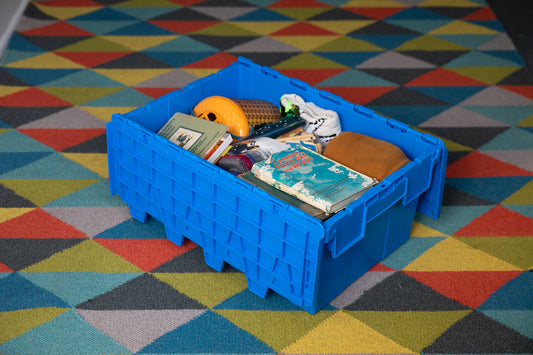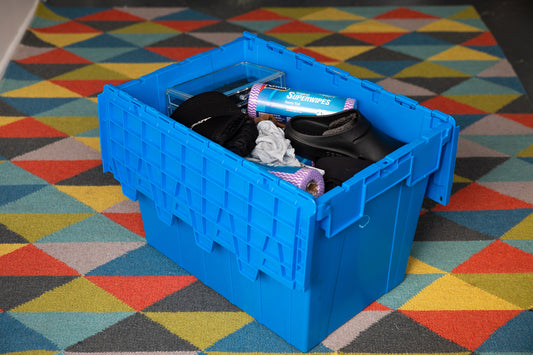There is a difference between clutter and hoarding. Both are related to accumulating items, but it’s important for people to understand what is clutter and hoarding in order to address these issues properly.
This article will delve into the definitions, causes, and impacts of clutter vs hoarding. With the right information, people can take steps to create cleaner, healthier, and happier homes for themselves and their families. Here at Clutter Collect, we offer solutions for both clutter and hoarding that can improve your everyday life.

What is Clutter?
Clutter is having too many possessions at home or in a space to the point where it feels chaotic and crowded. Clutter builds up gradually over time if your unimportant or unused items are kept without organisation or in a defined place. Common clutter items include piles of paperwork, overflowing closets of clothing, countertops covered in junk mail and knickknacks, and crowded garages filled with unused tools and equipment.
Some clutter can be nostalgic or valuable, but when there’s a sheer volume of clutter it can collect dust and dirt.
What is hoarding?
Hoarding is a persistent difficulty discarding or parting with possessions, regardless of their actual value. A person with a hoarding disorder experiences distress at the thought of getting rid of the items.
Excessive accumulation of items, regardless of actual value, occurs. Hoarding often creates cramped and cluttered living spaces that are unsanitary and unusable.
People with hoarding disorder have persistent difficulty throwing away or parting with possessions, regardless of their actual value. The symptoms include:
- Accumulating and failing to throw out a large number of items that appear to most people to have little or no value.
- Distress, anxiety, impairment in daily functioning, or inability to use living spaces as intended due to the amount of possessions.
- Inability to control the urge to acquire or difficulty throwing away unneeded items, despite the consequences.
- Denial of excessive acquiring and failure to discard possessions.
- Potential risk of falls, fire hazards, unsanitary conditions, and obstructed exits.
Difference Between Clutter vs Hoarding
Clutter is a collection of things that are out of order or out of place, making a room appear untidy. It may contain items that are unused, unnecessary, or simply in the wrong place. Hoarding, on the other hand, is a more extreme form of clutter where individuals constantly struggle to part with their possessions, resulting in excessive accumulation of items. Hoarding often leads to cramped living conditions and improper use of space.
Clutter vs hoarding - they may seem similar on the surface, but there are some key differences between the two:
- Quantity vs. Value: People with clutter tend to accumulate large quantities of items they don't necessarily need or want. However, they still recognize those items as essentially worthless. People who hoard attach immense value and meaning to their possessions, even things that appear worthless to others.
- Organisation: Those with clutter usually want to get organised and often feel ashamed of the mess. Their stuff piles up due to laziness or being overwhelmed. People who hoard have systems that make sense to them and don't see their stuff as messy.
- Insight: People with clutter recognize their problem but have difficulty getting organised and decluttered. Hoarders lack insight into their problem and strongly resist letting go of possessions. They don't see their behaviour as an issue.
- Risks: Clutter poses fire, fall, and health risks if left extremely out of control. Hoarding puts people at even greater risk due to blocked exits, utilities, and inability to cook or clean. It can require cleanouts by professionals.
- Impairment: Moderate clutter causes stress and wastes time looking for things. Extreme hoarding can prevent people from using living spaces properly, cooking, sleeping, and socialising. It severely impairs basic living activities.
- Treatment: Clutter benefits from organisation systems, decluttering help, and addressing underlying issues like stress and procrastination. Hoarding requires psychotherapy to address beliefs about possessions, as well as decluttering assistance.
Strategies for Managing Clutter vs Hoarding
Here are some effective strategies to manage clutter and hoarding. There are systematic approaches that can help to deal.
- Start small: Start by tackling small areas or specific categories of objects rather than trying to organise the entire room at once. This will help you not feel overwhelmed and create a sense of progress.
- Set realistic goals: Define your desired outcome and set achievable decluttering goals. Breaking the process down into manageable steps can make it more achievable.
- Sort and Categorize: Create specific sections for different types of items and sort them accordingly. This will help you determine what you need, what can be thrown away, and what can be donated or sold.4. Follow the “one in, one out” rule: For every new item you take home, take an old one. This will prevent clutter from accumulating over time.
- Seek professional help if needed: If you or someone you know is suffering from hoarding, it is important to seek help from professionals who specialise in hoarding.They can provide advice, support and resources to address the causes.
By implementing these strategies, you can manage clutter in your living space.
If you find yourself overwhelmed by clutter or struggling with hoarding, there are decluttering services available to help you. Here at Clutter Collect, we are a professional decluttering service and offer advice on how to declutter.






